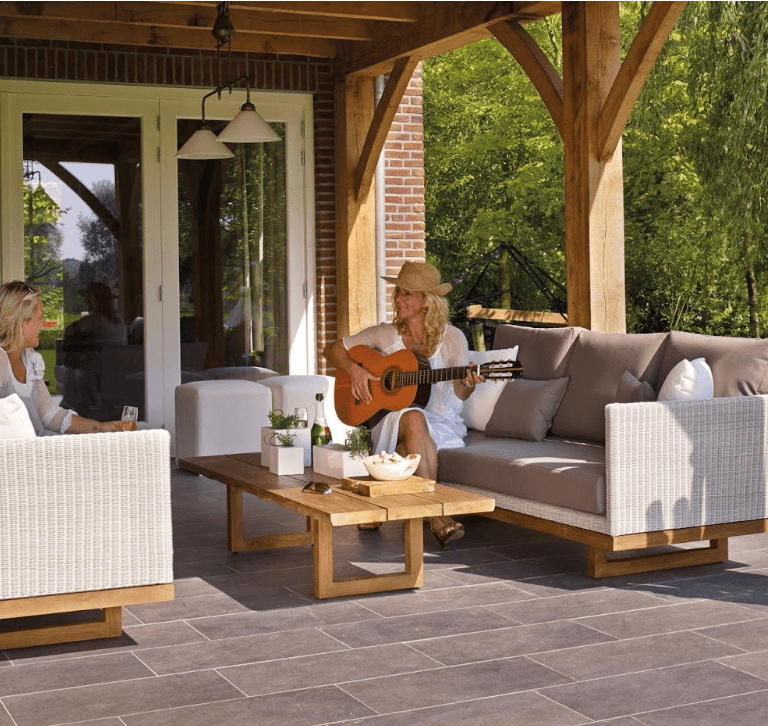Whether you are a first-time home buyer, a home builder, or just a talented DIY builder, the decision to add a deck onto your house is a significant one for the property’s overall enhancement.
While everyone likes unwinding outside on a terrace, porch, or patio, it might be difficult to begin putting together a deck estimate’s entire cost. Designing a deck layout may make almost anybody want to flee to higher ground, whether they choose to hire experienced deck builders to complete their backyard project or keep expenses down by building a deck themselves.
However, it’s crucial to keep thinking about the increased value that even a small, easy structure would provide to your house and yard. With a smart home renovation investment in San Diego, CA, a deck, you may provide a growing family additional space or create a new focus point for your house in the rear.
Does a Deck Add Value to a Home?
Yes, in a nutshell. A deck expansion is a proven way to get your money’s worth in addition to providing your loved ones with endless outside pleasure.
Is Building a Deck Worthy of the Money?
Your home’s usable outdoor living area will grow if you add a deck, and there will be more space for friends and family to unwind together.
First, you’re able to increase the amount of usable space for your family’s house. Designing and installing a deck is a fantastic way to expand the living space without the clutter and stress of significant construction.
So that your guests may stretch out as they choose, create an additional living room, conference room, or relaxing area. Additionally, if an upper-level deck is being built, using a deck water drainage system may increase the outside space by double.
Return on Investment for a Deck
Building a new deck increases a home’s size while costing far less than adding a new room, finishing a basement, or finishing an attic. One of the best returns on investment (ROI) for renovation or new building projects still comes from backyard structure constructions and decks.
Despite the fact that not every deck is equally valuable owing to regional climatic variations, material preferences, and design decisions, they all tend to boost a home’s property value.
In the 2019–2020 year, a new deck’s reported average return upon investment is about 70%.
Compared with either the 53% recorded for a fresh bathroom construction or renovation or the 44% reported for a fresh addition build, this is a significant percentage.
Feature an Outdoor Element
In addition to providing additional room for outdoor eating, entertainment, and leisure, new deck constructions may also improve the appearance of the house and backyard itself. Designing and creating a deck may boost the value of your house by also improving the aesthetics of your entire yard.
You can choose to emphasize architectural aspects of your home, compliment water features like waterfalls, streams, or rivers and lakes, or create a unified outdoor architecture with a linking garden. A great technique to grab the interest of potential homeowners is to highlight a specific architectural or design detail of your property.

Composite Decking is all the Rage for Good Reason
Traditional wood decking may be replaced with contemporary, environmentally friendly composite decking. It is intended to offer a long-lasting and low-maintenance option for outdoor flooring. Composite decks (https://www.sciencedirect.com/topics/agricultural-and-biological-sciences/composite-wood-products) are an ingenious synthesis of components that have been painstakingly crafted to give the very best of both worlds: the authentic appearance and feel of hardwood and the enhanced functionality of cutting-edge technology.
Composite deck boards include high-quality plastic polymers and reclaimed wood fibers. A strong and weather-resistant material is produced as a result of this fusion, one that can survive the elements neither fading, splintering, as well as warping over time. Additionally, composite decking supports a more ecological approach to exterior construction because it is made from recyclable components.
Various Forms of Composite Decking
Composite deck boards come in a variety of quality levels. They come in a variety of shapes and materials, often combining various types of plastic with common materials like bamboo, hardwood, or rice husk. Some composite decking materials further include elements to improve their quality and appearance, such as protective finishes and textured surfaces.
Here are the most typical choices you’ll find while looking for composite decking:
Capping or No Capping
Capped composite decking has an outside layer of protection that is usually constructed of hard polymer. This safeguards the deck’s durability and durability against fading by serving as a barrier between moisture, staining, and UV radiation.
The composite decking without a cap, however, is devoid of its exterior covering. It is the more affordable choice and nevertheless offers the key advantages of composite materials. If you happen to have an outdated composite deck that has a few scratches, it probably used uncapped boards because early hybrid boards were frequently uncapped.
Square or Grooved
The sides of composite decking boards with grooves are pre-cut grooves. This enables the use of concealed fasteners for a cleaner and more seamless deck surface.
Comparatively, square-edged or ungrooved composite decking needs to be installed using nails and screws. Click here to read more about decking screws and fasteners. These boards work well around the perimeter of one’s deck or in other locations where you can see the board edges.
Scalloped or Solid
In a scalloped decking layout, the design features contrasting a perforated bottom board with a plain bottom board. Strong deck foundations are provided by solid composite decking planks. They’ll provide you with exceptional strength and are perfect for decks where it’s possible to see the deck boards’ undersides.
Conversely, empathetic channels are included beneath each board of scalloped composite decking (also known as fluted composite decking). The weight and amount of material used are greatly decreased. Despite being lightweight, they are reliable and affordable. One drawback is that the beverage rail on atop of a railing cannot be made of a scalloped deck board.
